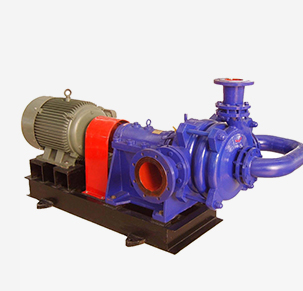English
- Afrikaans
- Albanian
- Amharic
- Arabic
- Armenian
- Azerbaijani
- Basque
- Belarusian
- Bengali
- Bosnian
- Bulgarian
- Catalan
- Cebuano
- Corsican
- Croatian
- Czech
- Danish
- Dutch
- English
- Esperanto
- Estonian
- Finnish
- French
- Frisian
- Galician
- Georgian
- German
- Greek
- Gujarati
- Haitian Creole
- hausa
- hawaiian
- Hebrew
- Hindi
- Miao
- Hungarian
- Icelandic
- igbo
- Indonesian
- irish
- Italian
- Japanese
- Javanese
- Kannada
- kazakh
- Khmer
- Rwandese
- Korean
- Kurdish
- Kyrgyz
- Lao
- Latin
- Latvian
- Lithuanian
- Luxembourgish
- Macedonian
- Malgashi
- Malay
- Malayalam
- Maltese
- Maori
- Marathi
- Mongolian
- Myanmar
- Nepali
- Norwegian
- Norwegian
- Occitan
- Pashto
- Persian
- Polish
- Portuguese
- Punjabi
- Romanian
- Russian
- Samoan
- Scottish Gaelic
- Serbian
- Sesotho
- Shona
- Sindhi
- Sinhala
- Slovak
- Slovenian
- Somali
- Spanish
- Sundanese
- Swahili
- Swedish
- Tagalog
- Tajik
- Tamil
- Tatar
- Telugu
- Thai
- Turkish
- Turkmen
- Ukrainian
- Urdu
- Uighur
- Uzbek
- Vietnamese
- Welsh
- Bantu
- Yiddish
- Yoruba
- Zulu
Telephone: +86 13120555503
Email: frank@cypump.com
Aug . 13, 2024 11:36 Back to list
Understanding the Mechanism of Slurry Pumps and Their Efficient Operation in Various Applications
How Does a Slurry Pump Work?
A slurry pump is a type of pump specifically designed to transport slurries, which are mixtures of solid particles and liquids. These pumps play a critical role in various industries, including mining, construction, and wastewater treatment, where the movement of abrasive and viscous materials is often necessary. Understanding how a slurry pump works is essential for anyone involved in the maintenance or operation of industrial processes.
At its core, a slurry pump operates based on the principles of fluid dynamics. The essential components of a slurry pump include the impeller, casing, and wear plates. The impeller is a rotating component that imparts kinetic energy to the slurry, allowing for its movement. The casing, often made from durable materials to withstand abrasive conditions, contains the impeller and directs the flow of slurry through the pump.
How Does a Slurry Pump Work?
Design features play a crucial role in the effective operation of slurry pumps. Since slurries often contain abrasive particles, these pumps are typically constructed from hard, wear-resistant materials such as high-chrome alloys or rubber linings. This construction helps minimize wear and tear, extending the pump's lifespan. Additionally, slurry pumps often incorporate adjustable features, such as expeller seals, to reduce the risk of leaks and improve efficiency.
how does a slurry pump work

One of the key considerations when selecting a slurry pump is the type of slurry being handled. Different slurries can vary significantly in terms of density, viscosity, and particle size. For this reason, slurry pumps come in various designs to accommodate the specific requirements of different applications. For example, submersible slurry pumps are designed to operate underwater, making them ideal for dredging or dewatering applications, while horizontal and vertical slurry pumps are used in various industrial processes.
Efficiency is another critical aspect of slurry pump operation. The hydraulic efficiency of a slurry pump is determined by its design and operating conditions. Factors such as flow rate, head pressure, and the properties of the slurry affect efficiency. To optimize performance, operators often monitor parameters such as flow rate, discharge pressure, and temperature to ensure the pump operates within its designed range.
Maintenance is crucial for slurry pump longevity and efficiency. Regular checks to assess wear on components, such as impellers and casing, can prevent unexpected breakdowns. Additionally, keeping the pump and its surrounding area free of sediment and debris can help maintain optimal performance levels.
In conclusion, slurry pumps are vital equipment in industries dealing with the transportation of mixtures of solids and liquids. Their operation relies on the principles of fluid dynamics and requires robust design features to handle abrasive materials effectively. Understanding how slurry pumps work, their design considerations, and the importance of maintenance can help ensure that they function efficiently, resulting in smooth industrial operations and reduced downtime. With the right knowledge and care, slurry pumps can continue to play a significant role in various applications for years to come.
-
ISG Series Vertical Pipeline Pump - Chi Yuan Pumps Co., LTD.|High Efficiency, Energy Conservation, Low Noise
NewsJul.29,2025
-
ISG Series Vertical Pipeline Pump-Chi Yuan Pumps Co., LTD.|High Efficiency&Energy-Saving
NewsJul.29,2025
-
ISG Series Vertical Pipeline Pump - Chi Yuan Pumps Co., LTD. | High Efficiency, Energy-Saving
NewsJul.29,2025
-
ISG Series Pipeline Pump - Chi Yuan Pumps | High Efficiency, Low Noise
NewsJul.29,2025
-
High-Efficiency Vertical Slurry Pumps for Mining & Industry Solutions
NewsJul.29,2025
-
High-Efficiency Pipeline Pump Solutions for Every Pipeline Pump Station
NewsJul.29,2025










